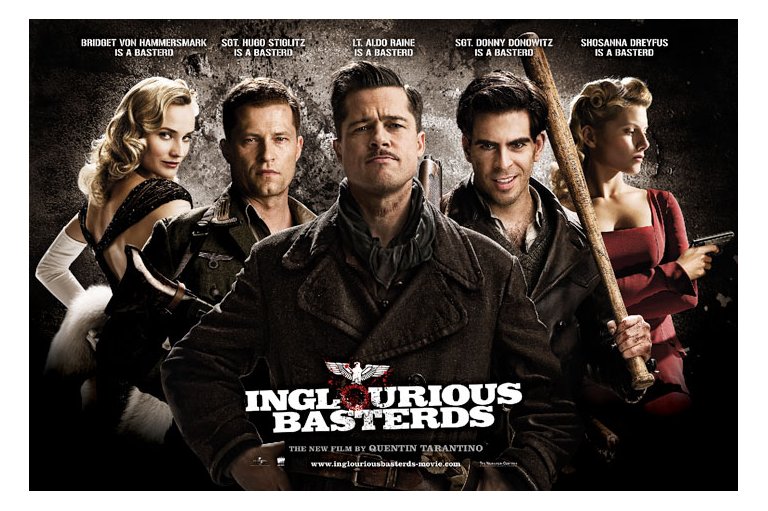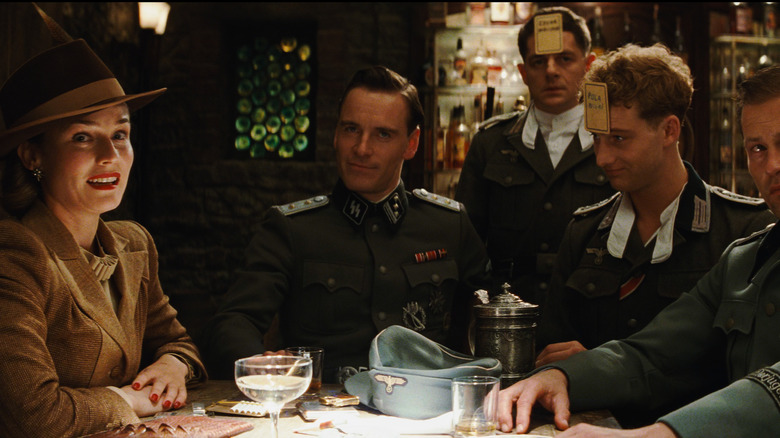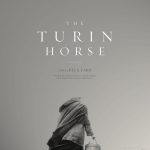Inglourious Basterds (2009)
- quoctinh
- November 25, 2024

Inglourious Basterds (2009): A Bold and Unforgettable War Epic
Introduction
Inglourious Basterds, directed by Quentin Tarantino, is a genre-defying World War II film that blends dark humor, historical revisionism, and gripping drama into a cinematic masterpiece. Released in 2009, the film features an ensemble cast, including Brad Pitt, Christoph Waltz, Mélanie Laurent, and Diane Kruger. Known for its sharp dialogue, intense character-driven moments, and Tarantino’s signature style, the film presents an alternate history of the war, delivering a tale of vengeance, resistance, and retribution against the Nazis.
Plot Summary
The film unfolds in five chapters, weaving together two parallel storylines that converge in a climactic act of explosive revenge.
The first storyline follows a Jewish woman, Shosanna Dreyfus (Mélanie Laurent), who escapes execution by SS Colonel Hans Landa (Christoph Waltz) after her family is massacred. Years later, Shosanna assumes a new identity as the owner of a cinema in Nazi-occupied Paris. When she learns that high-ranking Nazi officials, including Adolf Hitler, plan to attend a film premiere at her theater, she devises a plan to destroy them.
The second storyline revolves around a group of Jewish-American soldiers known as the “Basterds,” led by Lieutenant Aldo Raine (Brad Pitt). Their mission is simple: strike fear into the Nazis by ruthlessly killing and scalping German soldiers. The Basterds’ exploits become the stuff of legend, earning them both notoriety and a dangerous reputation.
The two plots collide when German actress and undercover British agent Bridget von Hammersmark (Diane Kruger) collaborates with the Basterds to infiltrate the film premiere. However, the brilliant and ruthless Hans Landa stands in their way, making every moment of the plan a tense, high-stakes gamble.
Themes
At its core, Inglourious Basterds explores themes of vengeance, identity, and the power of storytelling. The film subverts traditional war narratives, empowering characters marginalized in historical accounts, such as Jewish resistance fighters and women, to exact justice.
Tarantino also uses the medium of film itself as a weapon. Shosanna’s use of her cinema to enact her revenge highlights the power of art and storytelling in shaping history and resisting oppression.
The theme of identity is central, with characters often disguising their true selves or adopting new personas to survive. Whether it’s Shosanna’s transformation into a French theater owner or the Basterds’ adoption of brutal guerrilla tactics, these shifts underscore the complexities of war and survival.
Cast and Performances
Christoph Waltz as Hans Landa: Waltz delivers a career-defining performance as the cunning, multilingual SS officer. Dubbed the “Jew Hunter,” Landa is both charming and terrifying, making him one of Tarantino’s most memorable villains. Waltz’s performance earned him an Academy Award for Best Supporting Actor.
Brad Pitt as Aldo Raine: Pitt brings humor and charisma to the role of the Tennessee-born Basterds leader. His exaggerated Southern accent and deadpan delivery add a comedic edge to the film’s dark tone.
Mélanie Laurent as Shosanna Dreyfus: Laurent’s portrayal of Shosanna is both powerful and haunting. Her quiet determination and resilience drive the emotional core of the story.
Diane Kruger as Bridget von Hammersmark: Kruger shines as the glamorous and courageous double agent, delivering a nuanced performance that balances wit and vulnerability.
The supporting cast, including Michael Fassbender, Eli Roth, and Til Schweiger, further enhances the film’s dynamic ensemble.
Tarantino’s Style
Inglourious Basterds is quintessential Tarantino, featuring:
Sharp Dialogue: The film’s tension-filled conversations, particularly the opening scene at the dairy farm and the tavern standoff, showcase Tarantino’s mastery of building suspense through words.
Nonlinear Structure: The chapter-based format allows for a layered and immersive storytelling experience.
Homages to Cinema: The film is a love letter to classic cinema, with references to spaghetti westerns, war films, and the golden age of Hollywood.
Cinematography and Music
The film’s cinematography, by Robert Richardson, captures the grandeur and grittiness of war-torn Europe. Richardson’s use of close-ups during tense exchanges and wide shots of sprawling landscapes creates a visually stunning experience.
The soundtrack, featuring eclectic selections from Ennio Morricone to David Bowie, enhances the film’s dramatic and unpredictable tone. Tarantino’s choice of music often juxtaposes the action on screen, creating unforgettable cinematic moments.
Reception and Legacy
Inglourious Basterds received critical acclaim for its audacious storytelling, stellar performances, and bold reimagining of history. It was a commercial success, grossing over $321 million worldwide, and received multiple Academy Award nominations, including Best Picture, Best Director, and Best Original Screenplay.
The film’s portrayal of Hans Landa as a charismatic yet terrifying villain redefined the archetype, while its willingness to rewrite history sparked debates about the role of fiction in addressing historical atrocities.
Conclusion
Inglourious Basterds is a bold and uncompromising film that pushes the boundaries of war cinema. Through its unforgettable characters, razor-sharp dialogue, and subversive narrative, Tarantino crafts a story that is as entertaining as it is thought-provoking.
Whether you’re drawn to its thrilling action, dark humor, or poignant exploration of justice and identity, Inglourious Basterds remains a cinematic triumph that challenges traditional storytelling and invites audiences to imagine a world where the oppressed can rewrite history on their own terms.











